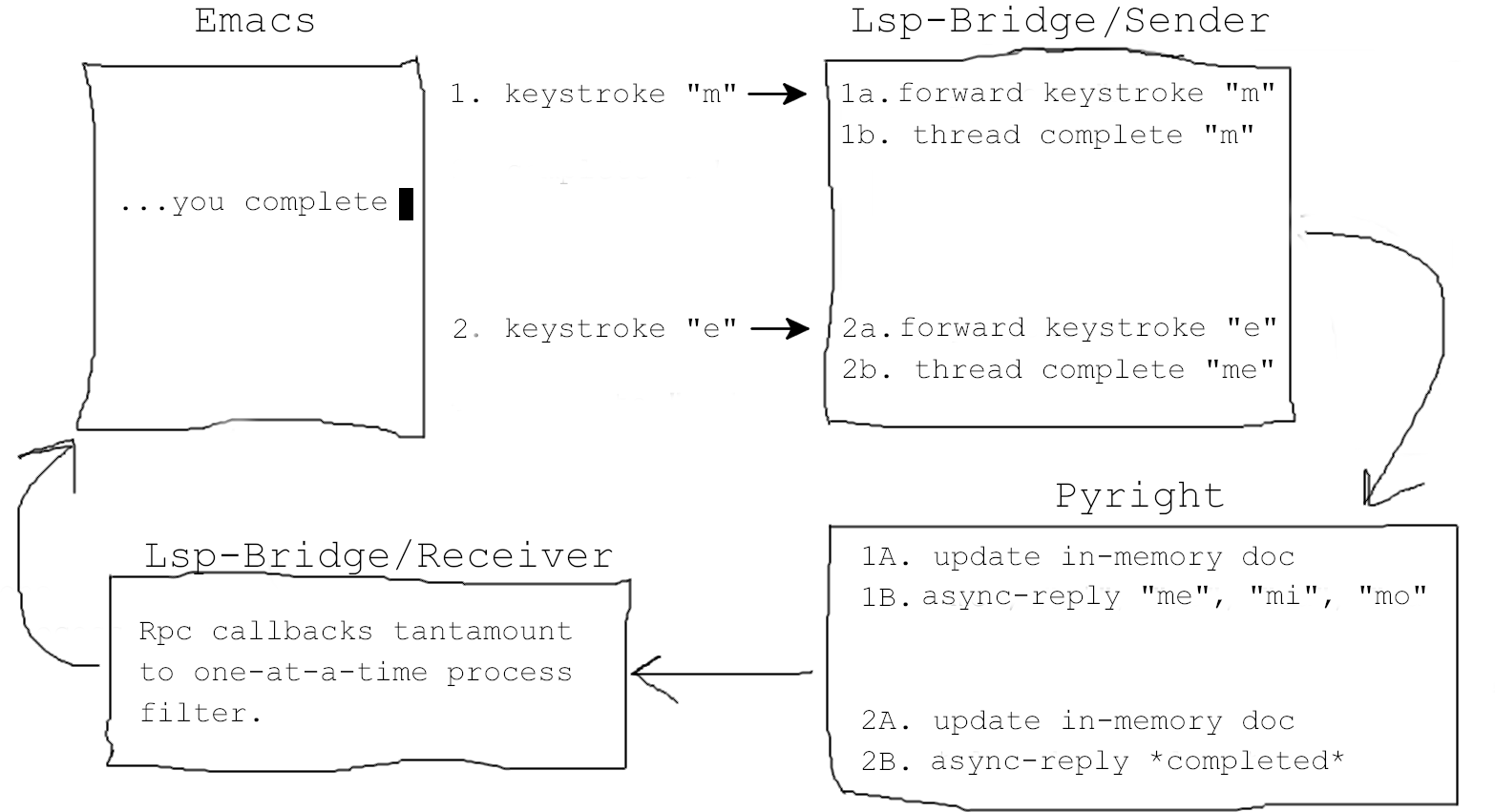Lsp-Bridge, Not Even Wrong
People will wonder, why browbeat a youngster? I guess I'm still sore
he scuttled my book review of Three Body Problem for being off-topic.
I also wanted to commandeer emacs-china.org as my personal
advertising platform, but he beat me to it. So the forum is rife with
EAF this and EAF that.
In typical lsp, the message sequencing be like Figure 1:

Figure 1: Typical
Lsp-bridge offloads steps 2 and 4 in Figure 1 to a third-party python process.

Figure 2: Atypical
1. Why lsp-bridge isn't faster
- Steps 2 and 4 in Figure 1 are async and take no time. They merely serialize and transmit request strings.
- Emacs processing of Pyright's responses remains single-threaded.
- Most lsp servers like Pyright are single-threaded.
2. Why lsp-bridge is obviously wrong
- Introduces additional process.
- Introduces python dependency.
- Introduces rpc translation layer (
epc.el).
3. Why lsp-bridge is egregiously wrong
Completion requests are now hard-wired (in python, no less) to occur
in lockstep with keystroke notifications in steps 1b and 2b of Figure
2. This is obviously bad if the lsp server does not
support completions, which I grant is unlikely, but more alarmingly,
you must type into the buffer to get completions. You cannot C-M-i
on a pre-existing word "wt" and expect to get "wth" and "wtf".
There is a saying in American politics. If you're explaining, you're losing. My guy wrote a treatise why he spurned emacs's traditional completion-at-point behaviors.